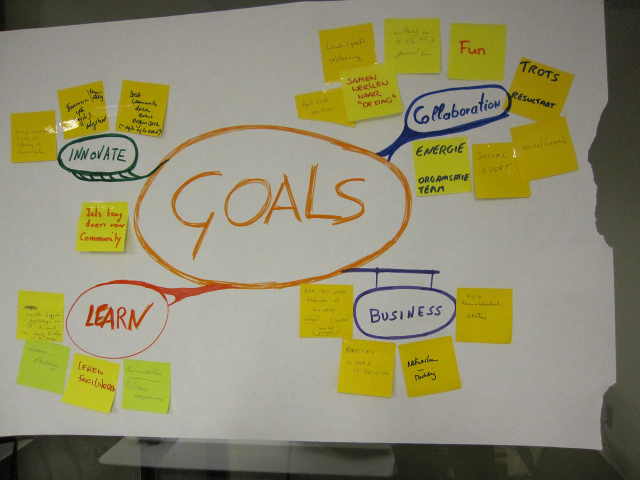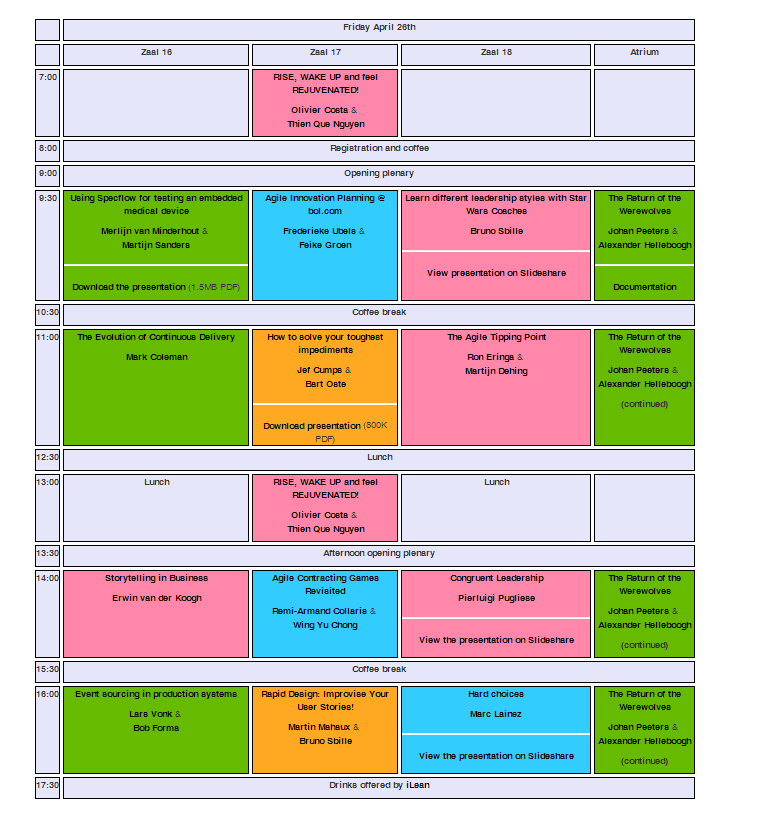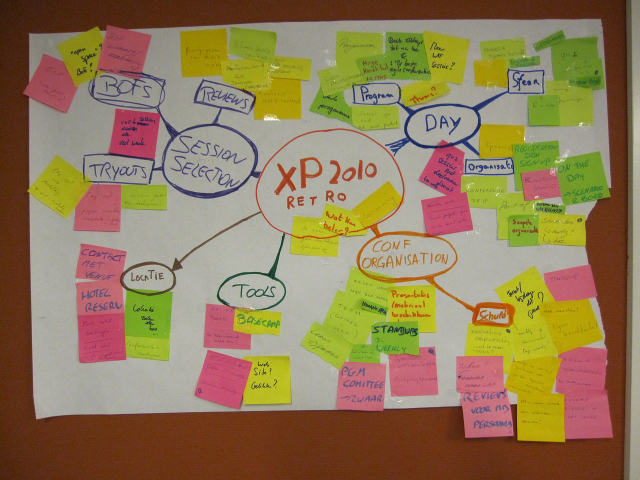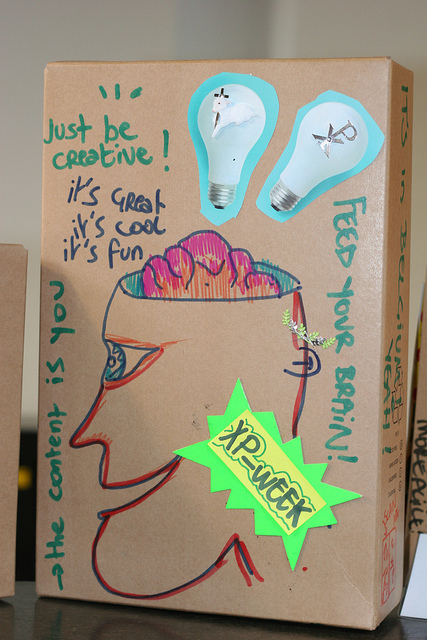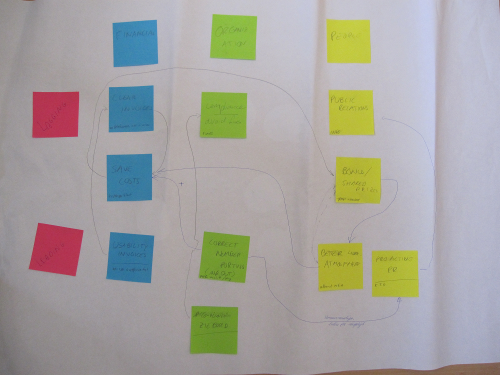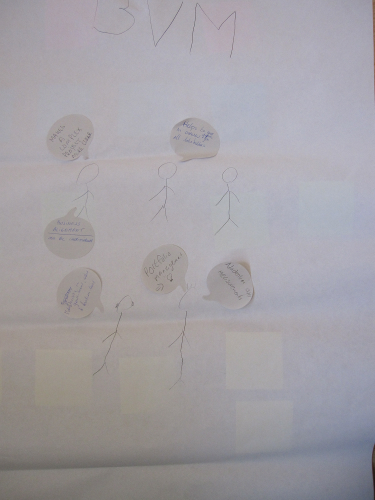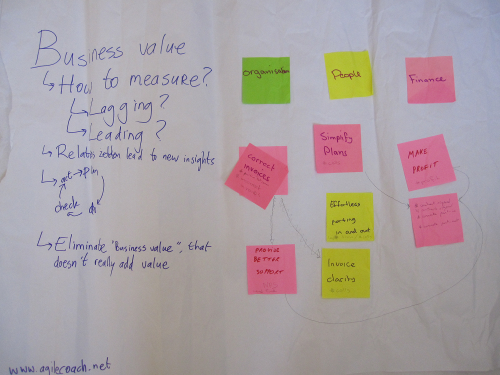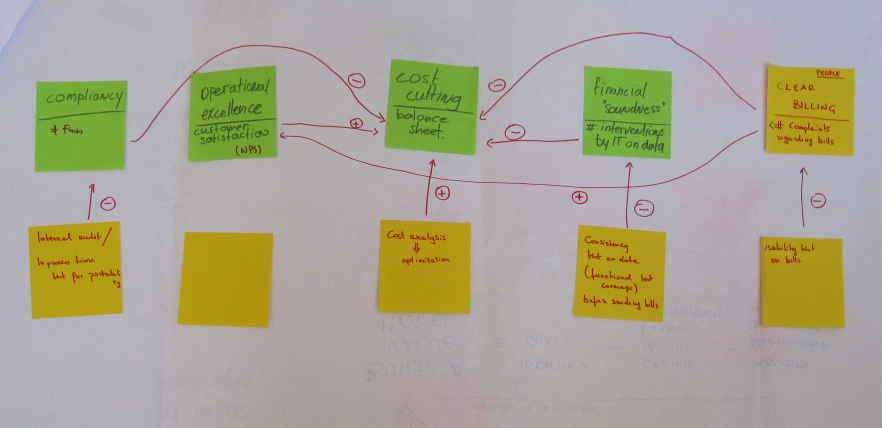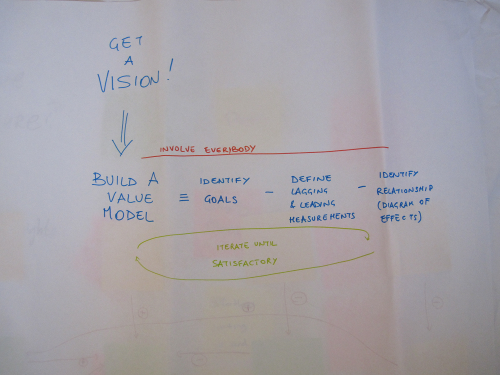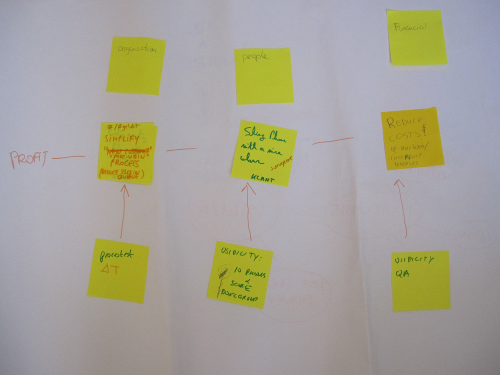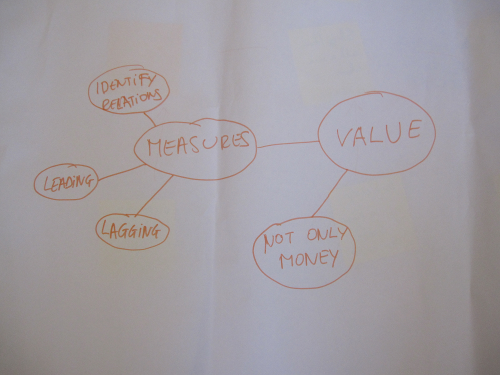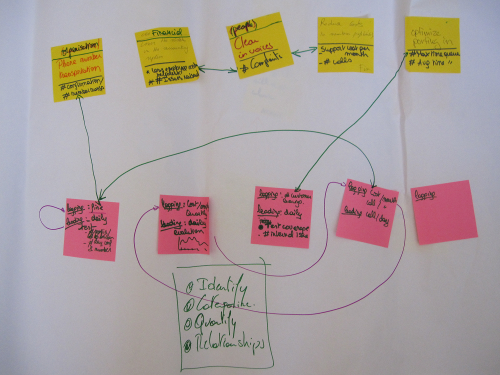XP Days Benelux is an international conference where we learn to bring software to life and grow mature systems that support business needs.
It provides an excellent environment for exchanging ideas, hands-on exercises and extreme experiences.
The best way to learn is to facilitate a session. We like sessions where you explore ideas as well as questions.
The conference will be held on 28 and 29 November, 2013 in Mechelen, Belgium.
The best way to learn is to facilitate a session at XP Days!
We’re looking for sessions where you explore ideas as well as questions. Sessions that dig deeper, going beyond the basic techniques and practices. We really want to find out why/how things work or don’t work. We invite you to propose:
- hands on coding/design/architecture sessions;
- discovery sessions – open ended workshops that explore new topics, common problems, promising techniques, or burning questions;
- experiential learning sessions; get people learning by doing & reflecting; for example games or simulations.
We’re not only interested in agile and software related topics but we also want to explore boundaries and cross borders. What can we learn from other disciplines or sciences?
Available timeslots are 75 and 150 minutes.
We also welcome short experience reports (30 minutes) that focus on what didn’t work and why.
Do you have an interesting story, idea or question?
Send us your session idea today.
What’s so special about XP Days?
For one thing, we constantly try to apply XP, agile, lean, systems thinking, theory of constraints and all the other stuff we talk about. It wouldn’t be an agile conference if it wasn’t organised by using agile values, principles and techniques.
For example: how is the way we build the program agile?
Collaborating to get the best possible sessions
We don’t think BDUF is appropriate or possible, not even for a session description. Therefore, we ask session authors to send in a simple proposal: title, subtitle, presenters, description. It’s the equivalent of a story card: the promise for a conversation about the session.
Once the proposal is sent in, the author(s) can incrementally fill in more information, as the session becomes clearer. There’s a separate deadline for submitting proposals (July 13th) and finalising the proposals (August 28th), to avoid “student syndrome” and last-minute session hurried submissions. Within those two timeboxes, the authors work at their own (sustainable) pace.
Session authors help other session authors by asking questions and giving feedback using the “Perfection Game“. The proposal authors (and the conference organisers) act as “peer coaches“. Through the magic of questions and feedback, the proposal author iteratively improves their proposal(s). Aren’t session authors helping their “competitors” in the race for a place in the program? We typically get 3 proposals per slot, so the competition is fierce. Well, nobody said collaboration was easy. In the end we all benefit from a better conference program. And the organisers see who applies the agile values and who just talks about them.
Isn’t this coaching only useful for beginners? It certainly helps new presenters to marshal their ideas. But, as we’ve experienced while pair programming, experienced presenters get new insights and clarity when “juniors” ask naive questions.
The most powerful coaching questions focus on goals and benefits for participants. Why should someone come to this sessions? What is the one idea you want to get across? What will participants be able to do after attending this session that they couldn’t do before? How will you know this session was a success for participants?
A common problem with session proposals is that the authors try to “pile on” too many ideas. The usual session feedback reads “not enough time”. The solution is not to take more time, but to present less material more thoroughly. Think deeply: what is your Minimum Viable Product? If there’s any time left in your session you can spend it on interaction with participants and exploration of your central idea, rather than adding more ideas.
Release early, release often
A session proposal is not a session. You may have created the greatest session proposal, that doesn’t mean you’ve got the greatest session. There’s only one way to know if your session design works: implement it, release it and get feedback from participants. We therefore encourage presenters to do “tryouts” of their session. We offer places to do this at the Agile Belgium and Agile Holland meetups. You may be able to schedule a tryout at a local user group or in your company. Or just invite a few friends and colleagues to try out your session.
Seasoned presenters know that it takes at least three iterations to get all the details and the timing right.
Preparing to select sessions
Now that we’ve iteratively improved session descriptions, the most difficult task is to select the sessions for the program.
Near the end of the session improvement process we ask all session authors to select the sessions they want to see in their “ideal track”. We use these votes as a start of our selection process.
We also use these votes to calculate the “value” of a draft program. We do this by calculating the Program Attendance Factor (PAF) for each voter. The PAF value indicates how many of their preferred sessions a voter can attend, given the layout of the program. To count, a preferred session must be in the program and it must not be at the same time as another preferred session. A program that has a higher total PAF has more value for voters, because they can attend more preferred sessions.
In preparation for the program committee meeting we create a card for each session. Making a conference program requires a lot of visual management:
- The color of the card indicates the type of subject so that we can quickly see if the program has a good balance of sessions
- The names of the presenters are clear so that we can ensure no presenter has more than one session in a day (sustainable presenter pace)
- The card has coloured dots to indicate the type of session and the experience level so that we can see at a glance if there’s a good balance for participants with different learning styles and experience
- The cards have different sizes representing session length so that we can’t put them in program slots of the wrong size
The program committee reviews all session proposals before the program committee meeting. There are so many proposals that program committee members can’t review or even read them all. Therefore, the committee divides the sessions among its members and trusts that the other members have good judgment.
Before the program committee meeting, the proposals are put into four categories:
- the sessions we really want to see in the program. Each program committee member can “champion” a session
- the sessions that we won’t consider because they’re incomplete, withdrawn or inappropriate
- the sessions that were selected in the voting process
- other sessions
Sessions on the board
We have large sheets of paper that represent each of the days with drawn slots that are just the right size for the session cards.
Building a program happens in three rounds:
- Create a first version by putting the championed and most voted for sessions in appropriate slots. We do this track per track. For example: first fill a track on both days with technical sessions, then fill a track with process sessions… It’s OK if some slots are still empty.This first step should go quite quickly, without too much discussion. The goal is not to create a perfect program; it’s not even a workable program. We just need a version to start iterating.
- We spot a constraint violation, for example. a presenter who does two sessions in one day or we’ve selectedtoo many sessions of one type or subject. We resolve the constraint by swapping the problem session with another same-sized session already on the board or not on the board. We may also spot improvements in balance or PAF score. These are also performed using swaps. The only constraint is that we can’t introduce constraint violations by this swap. We keep iterating until the program stabilizes. We select a few “backup” sessions that we can add to the program in case one of the selected presenters can’t come.
- We internally publish a draft version of the program. All organizers can review the program at their leisure to spot any constraint violations or improvements. We often have to take a bit of distance to spot these. When nobody has any more improvement ideas, we contact the authors of selected and rejected proposals. Sometimes presenter availability can introduce new constraints (for example, the presenter can only be present on the first day but his session is scheduled on the second day). In that case, we go back to swapping sessions to resolve the constraint.
- DONE. Until something happens like a presenter dropping out.
Getting better
We continuously improve this session proposal-improvement-review-selection process. We’ve incrementally built a tool that supports our workflow. New features get added just-in-time as we notice irritations or get new ideas for improvement. Most of the organisers participate in other conferences where we “‘steal” the best ideas. In return, we invite everybody to “steal” any idea they like.
In summary: creating a proposal, growing and refining it, coaching other to improve their proposal, doing tryouts and refining the session is a lot of work. And then you might not even get selected because there are so many great proposals.
Is it worth it? What’s the worst thing that could happen? You spent some time to understand an interesting subject better. That’s not so bad, is it? If you get selected or if you just attend, you get to spend two days with open, intelligent, helpful and experience people to explore and discover interesting new ideas and problems. And one of those ideas or problems could be yours.
